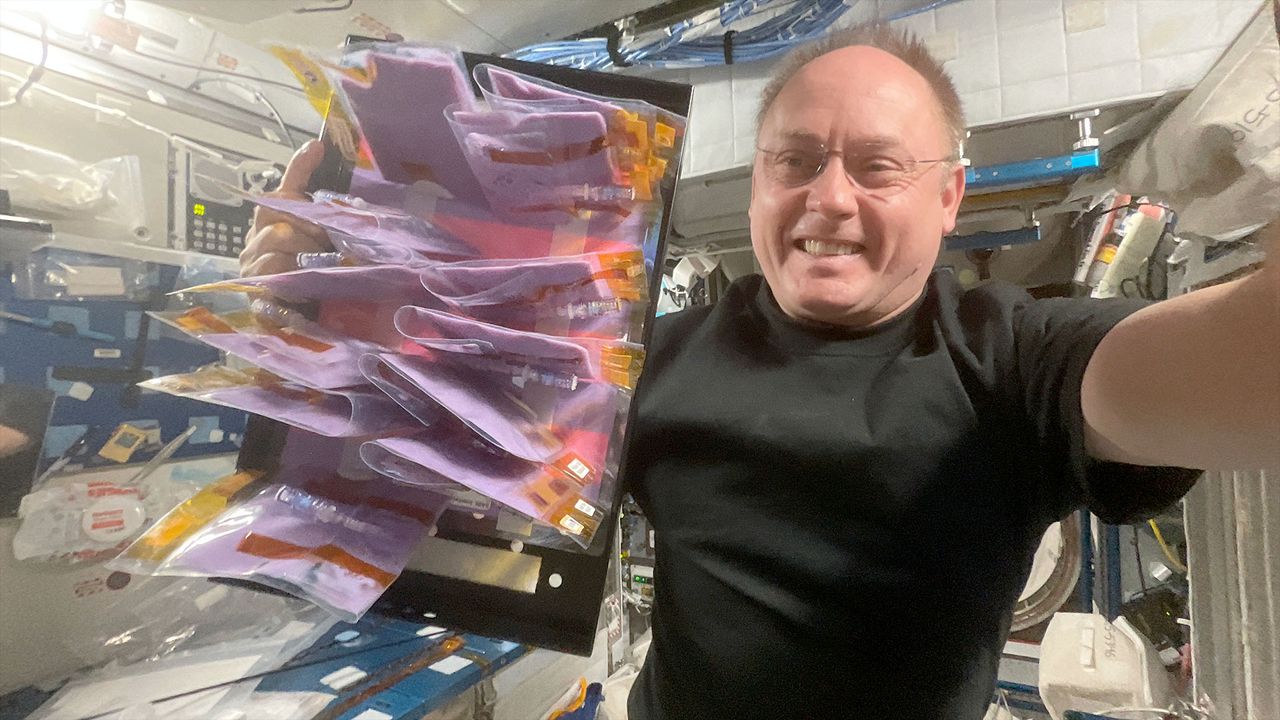Collective Swarms of Particles Shaping and Structuring the Universe
Collective particle motions produce galactic structures. Flocking birds in motion produce fractal patterns that resembles the bird's shape itself with the entire collective entity. Galactic spiral arm filaments contain swarms of high energy supernova particles. Electromagnetic fractal structural patterns are displayed in galaxy jets, bubbles, arm filaments, and the dusty disk. Innumerably more smaller self-similar particles moving in waves, each contains information of the whole entire structure.
New Outer Space Stories - RSS Feeds
-
When the Sun Dies: Could Alien Worlds Thrive Around Dead Stars?
-
[image: White Dwarf Star Surrounded by Planetary Nebula]White dwarfs may
still host habitable planets. Conditions like tidal heating and migration
shape th...
2 hours ago
-
Astronaut preps purple kefir for a vitamin boost | On the International
Space Station Sept. 8-12, 2025
-
As their research activities continued, the Expedition 73 crew had a busy
week on the International Space Station with the departure of a cargo
vehicle and...
3 hours ago
-
What We Know about Interstellar Comet 3I/ATLAS
-
[image: This image from the Multi-Object Spectrograph (GMOS-N) at the
Gemini North telescope shows the interstellar comet 3I/ATLAS. Image credit:
Internati...
9 hours ago
-
This Trio Of Robots Could Explore Lunar Caves
-
[image: European researchers are developing a three-member team of robots
that can cooperatively explore lunar caves. In this image, the robots are
being...
9 hours ago
-
Models explain mysterious feature controlling magnetic properties of the sun
-
In the late 1980s, scientists realized they could understand the interior
properties of the sun by observing the sound waves that resonate inside it.
This ...
15 hours ago
-
NASA blocks Chinese citizens from working on space programs
-
Washington (AFP) Sept 10, 2025
NASA has begun barring Chinese nationals with valid visas from joining its
programs, underscoring the intensifying space race...
1 day ago
-
Thornhill’s POV: Spiral Galaxies & Valles Marineris | Thunderbolts
-
A reading of the article “Spiral Galaxies and Grand Canyons” by Wal
Thornhill. Narrated by David Harrison, proprietor of Stickman On Stone. The
grandest ca...
6 days ago
-
Science Release: Hubble uncovers rare white dwarf merger remnant
-
[image: Merging white dwarf remnant (artist impression)]An international
team of astronomers using the NASA/ESA Hubble Space Telescope have
discovered a st...
4 weeks ago
-
We test Celestron's 10-inch StarSense Explorer
-
*This scope uses your smartphone to put thousands of deep-sky objects at
your fingertips.*
2 years ago
-
Hidden Supersymmetry of Electrostatic Fields
-
Juan D. García-Muñoz, A Raya A hidden supersymmetry of electrostatic fields
is evidenced. Proposing an ansatz for the electrostatic potential as the
natura...
3 years ago
-
Scientists Uncover Warehouse-Full of Complex Molecules Never before Seen in
Space
-
Scientists have discovered a vast, previously unknown reservoir of new
aromatic material in a cold, dark molecular cloud by detecting individual
polycycl...
4 years ago
-
1메모리 6기가 peteuplink
-
1메모리 6기가 peteuplink
5 years ago
-
The Fall and Rise of Betelgeuse
-
With its recent uptick in brightness, Betelgeuse appears to be slowly
returning to normal. But will it? Astronomers urge us to keep watch.
The post The F...
5 years ago
-
Welcome to Catch a Star
-
School students around the world are invited to take part in the 2019 Catch
a Star astronomy writing contest. To participate, students should submit a
writ...
5 years ago
-
Astronomers discover extremely hot, pitch-black exoplanet
-
Using the Hubble Space Telescope, astronomers have discovered a most
unusual exoplanet that reflects 94% of the visible light given off by its
host star,...
7 years ago
-
Super Volcano! History's Great Secret: The Global Catastrophe of 535 AD
-
Super Volcano!
*History's Great Secret: The Global Catastrophe of 535 AD*
[image:
https://upload.wikimedia.org/wikipedia/commons/8/80/Super-volcano_Tie...
8 years ago
-
Astronomers observe star reborn in a flash
-
An international team of astronomers using Hubble have been able to study
stellar evolution in real time. Over a period of 30 years dramatic
increases in...
8 years ago
-
Mystery Plumes: Did the Sun Bruise Mars?
-
Strange plumes have been spotted high in the Martian atmosphere that have,
so far, defied explanation. Now scientists think space weather is to blame.
9 years ago
-
-
Giant Bow Shock in Space
-
The beautiful image above shows a giant bow shock wave in space around a
young star. The name of the star is LL Ori and it is located in one of our
favor...
11 years ago
-
-
-
-













No comments:
Post a Comment